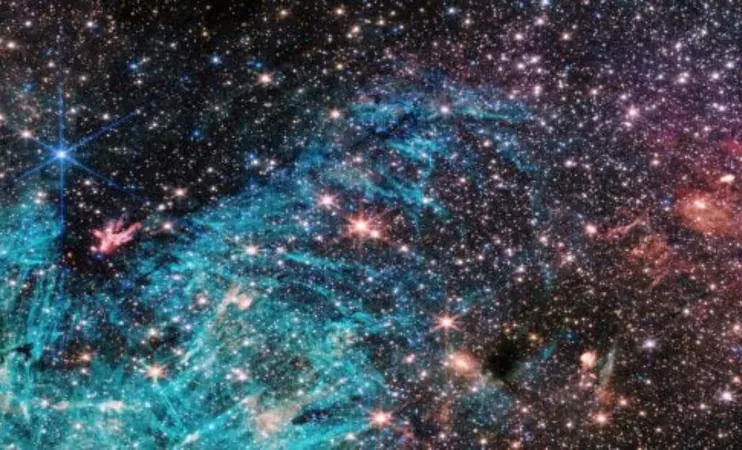
Mind-Blowing Discoveries from the Heart of the Milky Way: Webb Telescope Unveils Secrets of Sagittarius C
2025-05-06
Author: Yan
NASA's Webb Telescope Makes Groundbreaking Discovery
Get ready to have your mind blown! NASA's state-of-the-art James Webb Space Telescope has revealed extraordinary insights into a dynamic star-forming region called Sagittarius C, located right at the core of our Milky Way galaxy. A recent study published in The Astrophysical Journal showcases jaw-dropping views of this cosmic hotspot, packed with glowing filaments, energetic protostars, and intense magnetic fields that are reshaping our understanding of star birth and death.
Sagittarius C: A Galactic Powerhouse of Star Formation
Nestled in one of the most vibrant areas of the Milky Way, Sagittarius C is teeming with gas, dust, and energetic processes. According to John Bally, a professor of astrophysical and planetary sciences at CU Boulder, this region boasts the highest density of stars and substantial clouds of hydrogen, helium, and organic molecules, mirroring conditions that existed in the early universe. This makes it a real star-forming powerhouse—yet here's the twist: it appears to be producing stars at a slower rate than scientists had anticipated.
Magnetic Fields: The Surprising Culprits?
A striking revelation from the study is the presence of powerful magnetic fields interwoven throughout Sagittarius C. These magnetic forces seem to be creating hot gas filaments and may actually be hindering the star formation process. Samuel Crowe, a co-author of the study, notes that these magnetic fields give Sagittarius C a unique configuration unlike any other star-forming area in the galaxy. This could explain why star formation is lagging behind expectations in this dense region.
Unexpected Plasma Filaments Discovered!
In a twist of serendipity, researchers also stumbled upon unexpected filaments of plasma scattered throughout Sagittarius C. Rubén Fedriani, a co-author and postdoctoral researcher from the Instituto de Astrofísica de Andalucía, expressed surprise at these bright, elongated structures that stretch across several light-years. Made of hot, charged gas, these filaments add an entirely new layer of complexity to our understanding of star formation in extreme environments.
The Chaos of Star Birth and Evolution
The formation of stars within molecular clouds is anything but peaceful. As gas clouds collapse under gravitational forces, new stars are born, unleashing fierce radiation that eventually disperses the surrounding material. John Bally explains that even our own Sun likely emerged from a massive cluster just like Sagittarius C, but over billions of years, its sibling stars have drifted apart.
With these groundbreaking findings, the James Webb Space Telescope continues to illuminate the mysteries of our universe, challenging conventional wisdom and paving the way for new discoveries in cosmic evolution.



 Brasil (PT)
Brasil (PT)
 Canada (EN)
Canada (EN)
 Chile (ES)
Chile (ES)
 Česko (CS)
Česko (CS)
 대한민국 (KO)
대한민국 (KO)
 España (ES)
España (ES)
 France (FR)
France (FR)
 Hong Kong (EN)
Hong Kong (EN)
 Italia (IT)
Italia (IT)
 日本 (JA)
日本 (JA)
 Magyarország (HU)
Magyarország (HU)
 Norge (NO)
Norge (NO)
 Polska (PL)
Polska (PL)
 Schweiz (DE)
Schweiz (DE)
 Singapore (EN)
Singapore (EN)
 Sverige (SV)
Sverige (SV)
 Suomi (FI)
Suomi (FI)
 Türkiye (TR)
Türkiye (TR)
 الإمارات العربية المتحدة (AR)
الإمارات العربية المتحدة (AR)